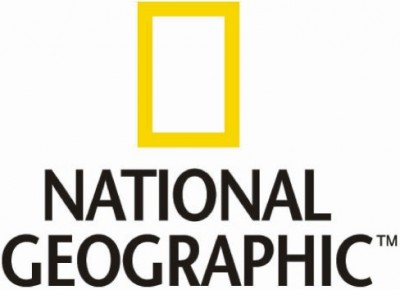 The National Geographic Society recently awarded a Young Explorer Grant to Jon Henn, who together with Drs. Guillermo Martínez Pastur, Vanessa Lencinas and Christopher Anderson, prepared the project to study the methods needed to restore riparian Nothofagus forests in Tierra del Fuego after the removal of invasive beavers. Mr. Henn will work with researchers in Tierra del Fuego for a year with the support of a Fulbright Scholarship, as well. During that time, this team seeks to determine key information regarding the ecophysiology and regenerative capacity of Nothofagus trees in beaver meadows. In this context, the research will also be linked with other ongoing studies funded by the U.S. National Science Foundation to better understand and manage invasive species and ecosystem services in southern Patagonia (see below).
The National Geographic Society recently awarded a Young Explorer Grant to Jon Henn, who together with Drs. Guillermo Martínez Pastur, Vanessa Lencinas and Christopher Anderson, prepared the project to study the methods needed to restore riparian Nothofagus forests in Tierra del Fuego after the removal of invasive beavers. Mr. Henn will work with researchers in Tierra del Fuego for a year with the support of a Fulbright Scholarship, as well. During that time, this team seeks to determine key information regarding the ecophysiology and regenerative capacity of Nothofagus trees in beaver meadows. In this context, the research will also be linked with other ongoing studies funded by the U.S. National Science Foundation to better understand and manage invasive species and ecosystem services in southern Patagonia (see below).
Category Archives: Cape Horn Education
UMAG Student Wins CONCIYT Scholarship
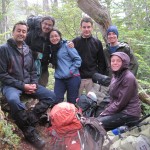 Ernesto Davis, M.S. candidate at the Universidad de Magallanes (left in photo), recently became one of the first UMAG students to obtain a scholarship from the Chilean National Science Commission (CONICYT). According to the evaluation, Mr. Davis was also the highest ranked applicant in the whole country. Previously, this student was also supported by OSARA and his thesis seeks to develop a habitat occupation model for invasive North American beavers in the Fuegian Archipelago.
Ernesto Davis, M.S. candidate at the Universidad de Magallanes (left in photo), recently became one of the first UMAG students to obtain a scholarship from the Chilean National Science Commission (CONICYT). According to the evaluation, Mr. Davis was also the highest ranked applicant in the whole country. Previously, this student was also supported by OSARA and his thesis seeks to develop a habitat occupation model for invasive North American beavers in the Fuegian Archipelago.
UNT Fulbrighter in Chile
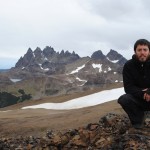 The first month of my Fulbright-Chile experience has already by far exceeded all my expectations. Once arriving to Punta Arenas I joined a group of students that I would be spending the next few weeks with for an international, interdisciplinary field course on conservation in the Cape Horn Biosphere Reserve. On arrival to Puerto Williams, the southern most town in the world, we began a number of activities with the park’s researchers. Our purpose was to gain a hands-on education in and contribute towards conservation through a series of multidisciplinary activities including group discussions, short lectures, artistic expression, community interaction, and field research among many other
The first month of my Fulbright-Chile experience has already by far exceeded all my expectations. Once arriving to Punta Arenas I joined a group of students that I would be spending the next few weeks with for an international, interdisciplinary field course on conservation in the Cape Horn Biosphere Reserve. On arrival to Puerto Williams, the southern most town in the world, we began a number of activities with the park’s researchers. Our purpose was to gain a hands-on education in and contribute towards conservation through a series of multidisciplinary activities including group discussions, short lectures, artistic expression, community interaction, and field research among many other
field activities.
I was given the responsibility of teacher’s assistant (TA) for the course. As a recently recruited graduate student at the University of North Texas my advisors and Fulbright host thought it a great way to introduce me to the region while allowing me to support the program as Fulbright student.
The course, entitled Tracing Darwin’s Path, is a newly developed form of conservation which is conscious of and emphasizes the idea that biodiversity is inextricably linked to and supported by cultural diversity. The course introduced approaches and methods for developing solutions to local and global conservation issues; cultural and environmental. Specific highlights which came up often in the interviews were: a three day ferry ride through the beagle channel to Puerto Williams; three nights camping at Róbolo Lake; a basket weaving lesson with a member of the Yaghan indigenous community; the ability to assist in the research occurring on Navarino Island; and the international experience gained from interacting with students from all over the world and from many different disciplines.
When finished with the course most of us who were flying back to Punta Arenas from Puerto Williams were held up due to the protests occurring in Punta Arenas at the time over gas rate hikes implemented by the national government. Though for some it became a bit of an inconvenience, for me and most of the others, it gave the group some cultural insight on regional political issues. We felt compassion for the people fighting to keep affordable a resource needed for survival in the cold rainy climate of the Magallanic region.
Once I made it back to Punta Arenas I embarked on the first of a series of annual navigations to explore the spectacular isolated sounds of Tierra del Fuego with some of the world’s leading bryologists, and a team of Chilean students from the UMAG. The main intention of the navigations is to survey the region for its mosses and liverworts. All in all, the navigation was an unforgettable experience where I traversed terrains seen by few. Those images of the strikingly
sculpted mountains and brilliantly blue creeping glaciers will stay with me forever.
For the next two months I will be living and traveling between Punta Arenas and Puerto Williams for participatory research as a means to adjust my broader research methods to the contours of the local culture. My goals for the upcoming month are to refine my project methodology so as to be ready to begin field work in; make contacts with regional scientists and natural resource managers; summarize the results of my interviews, and continue developing a paper that I and a few others were inspired to start during the course.
Jean-Paul Zagarola, taken from the January-March Fulbright Newsletter 2011
6th Version of Tracing Darwin’s Path
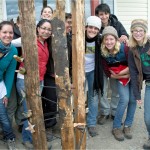 For a sixth time, students and faculty from the United States and Latin America have come together around the Tracing Darwin’s Path Field Course, coordinated by the Sub-Antarctic Biocultural Conservation Program as a joint effort between the University of North Texas and the Universidad de Magallanes. This year, students from Puerto Rico, Texas, Connecticut, Mexico, France, Argentina and Chile shared a 2.5 week experience of “field environmental philosophy” where they got to see first hand how the integration of ethics and ecology can contribute to biocultural conservation.
For a sixth time, students and faculty from the United States and Latin America have come together around the Tracing Darwin’s Path Field Course, coordinated by the Sub-Antarctic Biocultural Conservation Program as a joint effort between the University of North Texas and the Universidad de Magallanes. This year, students from Puerto Rico, Texas, Connecticut, Mexico, France, Argentina and Chile shared a 2.5 week experience of “field environmental philosophy” where they got to see first hand how the integration of ethics and ecology can contribute to biocultural conservation.
In addition, a documentary crew from the Chilean National TV was on hand to film the experience of how the Omora Park is implementing research, education and conservation at the ends of the earth. For more information click here:
Students from Omora Environmental Education Workshop Win First Prize in National Science Fair
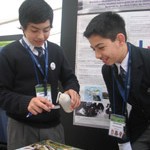 Since 2000, the Omora Park in Puerto Williams, Chile has conducted a permanent environmental education workshop as an elective in the local elementary school.
Since 2000, the Omora Park in Puerto Williams, Chile has conducted a permanent environmental education workshop as an elective in the local elementary school.
This course has allowed the school to be one of the first in the region to obtain environmental certification by the Chilean Environment Commission and also permits the students of the Omora Workshop to participate in the annual Magallanes Regional Science Fair with the support of the Explora Program of the Chilean Science Commission, the Provincial Government and the Institute of Ecology and Biodiversity’s Outreach Program funded by the Millennium Scientific Initiative.
This course also is supported by the researchers and students working in the Omora Park, and all graduate students conducting their theses and dissertations at Omora, for example, also serve as teachers in the workshop.
In previous years, the students of the Omora Workshop have placed well at the regional science fair, even coming in first place. However, we are very pleased to announced that this year the Omora students won first prize on the national level!
Their mentor was Tamara Contador, a UNT Ph.D. student in Biology who works with the Sub-Antarctic Biocultural Conservation Program, who helped them develop the award-winning project entitled “Diversity and abundance of freshwater invertebrates on rocky and submerged wood habitats in the Ukika River, Navarino Island, Cape Horn Biosphere Reserve,” which was presented in the competition in Concepcion by Carlos Saavedra and Francisco Olivares.
Congratulations to the students, mentors and teachers of the Omora Park’s education program in Puerto Williams!
Program Student Wins UNT Award for Best Natural Science Poster
 Michael Simanonok first visited Chile as a Tracing Darwin’s Path student in 2008. After that experience he changed his focus within his major in Biological Sciences to concentrate on ecology. Since then, he has worked for the Lewisville Aquatic Ecosystem Research Facility and was recently selected for a Sub-Antarctic Biocultural Conservation Program International Research Experience for Students award, funded by the US National Science Foundation. While on his IRES fellowship, Mike lived in southern Chile and Argentina for 3 months, collaborating with Drs. Guillermo Martínez Pastur and Vanessa Lencinas at the Centro Austral de Investigaciones Científicas in Ushuaia, Argentina. His research subsequently was transformed into an honors thesis studying the effects of forestry management and invasive beavers on stream ecosystems in Tierra del Fuego. Now, Mike has also been awarded the “Best Poster” in the natural science category at the UNT Scholar’s Day event, a university-wide initiative to highlight undergraduate research at UNT. Congratulations Mike!
Michael Simanonok first visited Chile as a Tracing Darwin’s Path student in 2008. After that experience he changed his focus within his major in Biological Sciences to concentrate on ecology. Since then, he has worked for the Lewisville Aquatic Ecosystem Research Facility and was recently selected for a Sub-Antarctic Biocultural Conservation Program International Research Experience for Students award, funded by the US National Science Foundation. While on his IRES fellowship, Mike lived in southern Chile and Argentina for 3 months, collaborating with Drs. Guillermo Martínez Pastur and Vanessa Lencinas at the Centro Austral de Investigaciones Científicas in Ushuaia, Argentina. His research subsequently was transformed into an honors thesis studying the effects of forestry management and invasive beavers on stream ecosystems in Tierra del Fuego. Now, Mike has also been awarded the “Best Poster” in the natural science category at the UNT Scholar’s Day event, a university-wide initiative to highlight undergraduate research at UNT. Congratulations Mike!
Program Student Assistant Wins “Best Employee Award”
 Kelli Moses has worked for the Sub-Antarctic Biocultural Conservation Program since before it existed. As the student assistant for the Tracing Darwin’s Path study abroad program, Kelli has been a vital contact between the program and UNT’s study body. For these and other efforts, Kelli was recently selected at a university level for recognition as a “2010 Student Employee of the Year” award. Congratulations Kelli!
Kelli Moses has worked for the Sub-Antarctic Biocultural Conservation Program since before it existed. As the student assistant for the Tracing Darwin’s Path study abroad program, Kelli has been a vital contact between the program and UNT’s study body. For these and other efforts, Kelli was recently selected at a university level for recognition as a “2010 Student Employee of the Year” award. Congratulations Kelli!
Sub-Antarctic Biocultural Conservation Session at UNT Scholars Day
 In the annual undergraduate Scholars Day at UNT, this year the Sub-Antarctic Biocultural Conservation Program was represented with an organized session of 3 posters that included:
In the annual undergraduate Scholars Day at UNT, this year the Sub-Antarctic Biocultural Conservation Program was represented with an organized session of 3 posters that included:
–> Stephen Dillenberg presenting his analysis of the historical trends in conservation research regarding the inclusion of ecological and social criteria. His findings showed a clear bias within academia to consider principally ecological considerations, while broader social criteria are still lacking.
–> Kelli Moses and a host of collaborators for their part presented the Miniature Forests of Cape Horn and how this novel research-conversation program has been able to link local, regional, national and international scales.
–> Michael Simanonok, for his part, gave the results of his honors thesis, which was supported by an NSF IRES grant. His work explored the dual effects of forestry and invasive beavers on stream ecosystems in Tierra del Fuego, finding that well managed forestry practices were able to maintain natural biodiversity and stream function, while beaver meadows exhibited high impacts on streams (see previous story on Mike’s award).
Subantarctic Biocultural Conservation Program Publishes New Book on the Invertebrates of Cape Horn
 Jaime Ojeda, UMAG M.S. Conservation student and Tamara Contador, UNT Ph.D. Biology student, have both worked at the Omora Park for several years. In 2008, they proposed to their advisers that they apply for funding from the Chilean National Environment Commission to support their research regarding marine and freshwater invertebrates, a grant which they won. The resulting project has allowed them not only to conduct their theses, but also to work in the local school with children and other residents to explore the “hidden” biodiversity of small organisms found underwater. Now, this project has produced a field guide entitled Guide the the Aquatic Invertebrates of the Cape Horn Biosphere Reserve. With the aid of Drs. Ricardo Rozzi, Christopher Anderson, James Kennedy, Andrés Mansilla and Francisca Massardo, the students indicate how to identify and describe the role of these small creatures in our subantarctic ecosystems. The book is expected to help educators, tourism operators and the general public get to know these often unknown and unappreciated members of our biotic community. With the support of the University of North Texas and the Universidad de Magallanes, the Omora Park and the Subantarctic Biocutltural Conservation Program is also formalizing an editorial line between UMAG and UNT that will continue to produce these natural history guides for the subantarctic ecoregion, as well as other texts related to environmental ethics and biocultural conservation. Stay tune for news on the launching of the Multi-ethnic Bird Guide to the Subantarctic Forests of Southern South America in May!
Jaime Ojeda, UMAG M.S. Conservation student and Tamara Contador, UNT Ph.D. Biology student, have both worked at the Omora Park for several years. In 2008, they proposed to their advisers that they apply for funding from the Chilean National Environment Commission to support their research regarding marine and freshwater invertebrates, a grant which they won. The resulting project has allowed them not only to conduct their theses, but also to work in the local school with children and other residents to explore the “hidden” biodiversity of small organisms found underwater. Now, this project has produced a field guide entitled Guide the the Aquatic Invertebrates of the Cape Horn Biosphere Reserve. With the aid of Drs. Ricardo Rozzi, Christopher Anderson, James Kennedy, Andrés Mansilla and Francisca Massardo, the students indicate how to identify and describe the role of these small creatures in our subantarctic ecosystems. The book is expected to help educators, tourism operators and the general public get to know these often unknown and unappreciated members of our biotic community. With the support of the University of North Texas and the Universidad de Magallanes, the Omora Park and the Subantarctic Biocutltural Conservation Program is also formalizing an editorial line between UMAG and UNT that will continue to produce these natural history guides for the subantarctic ecoregion, as well as other texts related to environmental ethics and biocultural conservation. Stay tune for news on the launching of the Multi-ethnic Bird Guide to the Subantarctic Forests of Southern South America in May!
Yet Another Fulbrighter in Cape Horn!
With only 2,000 human inhabitants, Cape Horn is quite likely the place on earth with the highest number of Fulbrighters per capita! To the existing cohort of 4, including Juan Harcha, Christopher Anderson, Ricardo Rozzi and James Kennedy, we are now proud to announce that Jean-Paul Zagarola has been selected for a Fulbright Fellowship in 2011 to conduct research in the Cape Horn Biosphere Reserve associated with community-based watershed management and the perception and valuation of ecosystem services of watersheds. Mr. Zagarola will be admitted to the Environmental Science Program at the University of North Texas in the fall of 2010, where he will pursue a masters degree under the mentorship of Drs. Anderson and Kennedy. “This is truly an exceptional achievement for JP. In addition, as the first new recruit since our program was formalized at UNT and the Universidad de Magallanes, we are very pleased. If all goes well he will become the first joint masters of subantarctic biocultural conservation student we produce with the UMAG as well”, said Christopher Anderson regarding this news. For more on previous Fulbright winners from Cape Horn click here.
Report from “6th Southern Connection Conference”
.jpg) During the 6th Southern Connection Conference, carried out in Bariloche, Argentina from 15-19 February 2010, the Sub-Antarctic Biocultural Conservation Program co-sponsored with its Chilean and Argentine colleagues a symposium to address the use of long-term socio-ecological research (LTSER) sites as a platform to affect conservation and management of the southern temperate forest biome found in Argentina, Chile, New Zealand and Australia. The Southern Connection Conference is a tri-annual meeting of ecologists, geographers, geologists and paleobiologists, begun in 1993 as an effort for the countries that were once part of the Gondwana supercontinent (Argentina, Chile, South Africa, Australia and New Zealand), to have the opportunity to share experiences and to generate collaborations. The invited participants to the LTSER symposium included representatives from Chile, Argentina and Tasmania, in the Program’s broader effort to promote LTSER initiatives in the Southern Hemisphere. In this context, the event co-organized by Dr. Christopher Anderson, Subantarctic Program Coordinator, and Dr. Guillermo Martinez Pastur, a forest ecologist at the Austral Scientific Research Center in Ushuaia, Argentina, was intended to further the ongoing work of the University of North Texas, the University of Magallanes and the Institute of Ecology and Biodiversity to implement a Chilean network of LTSER sites that work also on the integration of academic disciplines and the academy with society. Additionally, the Program will launch in March a special edition of the Revista Chilena de Historia Natural, which shares the proceedings of a previous workshop held at the Omora Park in 2008 about this topic.
During the 6th Southern Connection Conference, carried out in Bariloche, Argentina from 15-19 February 2010, the Sub-Antarctic Biocultural Conservation Program co-sponsored with its Chilean and Argentine colleagues a symposium to address the use of long-term socio-ecological research (LTSER) sites as a platform to affect conservation and management of the southern temperate forest biome found in Argentina, Chile, New Zealand and Australia. The Southern Connection Conference is a tri-annual meeting of ecologists, geographers, geologists and paleobiologists, begun in 1993 as an effort for the countries that were once part of the Gondwana supercontinent (Argentina, Chile, South Africa, Australia and New Zealand), to have the opportunity to share experiences and to generate collaborations. The invited participants to the LTSER symposium included representatives from Chile, Argentina and Tasmania, in the Program’s broader effort to promote LTSER initiatives in the Southern Hemisphere. In this context, the event co-organized by Dr. Christopher Anderson, Subantarctic Program Coordinator, and Dr. Guillermo Martinez Pastur, a forest ecologist at the Austral Scientific Research Center in Ushuaia, Argentina, was intended to further the ongoing work of the University of North Texas, the University of Magallanes and the Institute of Ecology and Biodiversity to implement a Chilean network of LTSER sites that work also on the integration of academic disciplines and the academy with society. Additionally, the Program will launch in March a special edition of the Revista Chilena de Historia Natural, which shares the proceedings of a previous workshop held at the Omora Park in 2008 about this topic.
Tracing Darwin’s Path Integrates Art, Philosophy and Ecology
 In its 5th version Tracing Darwin’s Path, the Subantarctic Biocultural Conservation Program’s premier field experience for Chilean and US students, took on the challenge of integrating art, philosophy and ecology. With the collaboration of Magallenic artist Paola Vezzani students utilized techniques from drawing and the arts to enhance their observation, description and comprehension of biological and cultural diversity in the subantarctic ecoregion. This year also for the first time, Melissa Armstrong, SEEDS Program Manager from the Ecological Society of America, participated with the course sharing her experience promoting diversity in ecological education, but also collaborating in a formal evaluation of the course. Subsequently, 8 students remained in southern Chile and Argentina to conduct independent research as part of an NSF-funded project to provide international research experience to students.
In its 5th version Tracing Darwin’s Path, the Subantarctic Biocultural Conservation Program’s premier field experience for Chilean and US students, took on the challenge of integrating art, philosophy and ecology. With the collaboration of Magallenic artist Paola Vezzani students utilized techniques from drawing and the arts to enhance their observation, description and comprehension of biological and cultural diversity in the subantarctic ecoregion. This year also for the first time, Melissa Armstrong, SEEDS Program Manager from the Ecological Society of America, participated with the course sharing her experience promoting diversity in ecological education, but also collaborating in a formal evaluation of the course. Subsequently, 8 students remained in southern Chile and Argentina to conduct independent research as part of an NSF-funded project to provide international research experience to students.
Fulbright Creates Regional Award to Benefit Research in Cape Horn
 Recently, the Chilean Fulbright Commission announced the creation of “regional” awards that will be available to select centers of excellence deemed capable of participating in this prestigious scholarship program. Fortunately, the Masters of Science in Subantarctic Conservation Program, coordinated by the University of Magallanes in assocation with the Institute of Ecology and Biodiversity and the University of North Texas, was one of only 4 centers in Chile which will compete for the 2-3 Science Initiative scholarships to be provided annually. According to Dr. Christopher Anderson, Magallanes Regional Delegate for the Chilean Fulbright Commission, “the inclusion in this group is not only a high recongition of the quality of the work being conducted in the Cape Horn Biosphere Reserve by the UMAG’s graduate students, but also offers a new opportunity to strengthen the international interaction of the students and scientists working in the Omora Park.”
Recently, the Chilean Fulbright Commission announced the creation of “regional” awards that will be available to select centers of excellence deemed capable of participating in this prestigious scholarship program. Fortunately, the Masters of Science in Subantarctic Conservation Program, coordinated by the University of Magallanes in assocation with the Institute of Ecology and Biodiversity and the University of North Texas, was one of only 4 centers in Chile which will compete for the 2-3 Science Initiative scholarships to be provided annually. According to Dr. Christopher Anderson, Magallanes Regional Delegate for the Chilean Fulbright Commission, “the inclusion in this group is not only a high recongition of the quality of the work being conducted in the Cape Horn Biosphere Reserve by the UMAG’s graduate students, but also offers a new opportunity to strengthen the international interaction of the students and scientists working in the Omora Park.”
UNT-Omora Student Wins IEB Scholarship
The Institute of Ecology and Biodiversity (IEB) has provided a doctoral dissertation support award to Tamara Contador, Ph.D. student at the University of North Texas (UNT) who is working with Drs. James Kennedy (UNT), Ricardo Rozzi (UNT-IEB-UMAG) and Christopher Anderson (UNT-IEB-UMAG) on a stream ecology project in the Robalo River watershed. The award (approximately $1,200) will aid in the development of Tamara’s dissertation in the Cape Horn Biosphere Reserve and helps to re-enforce the network of institutions, graduate students and projects encompassed by the Chilean Long-Term Socio-Ecological Research Network, coordinated by the IEB, and the Omora Alliance’s Sub-Antarctic Biocultural Conservation Program, coordinated by UNT and UMAG.
